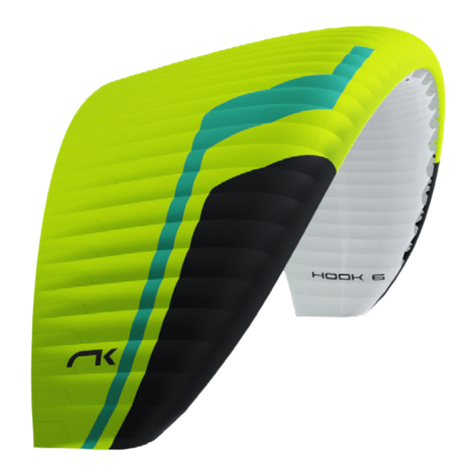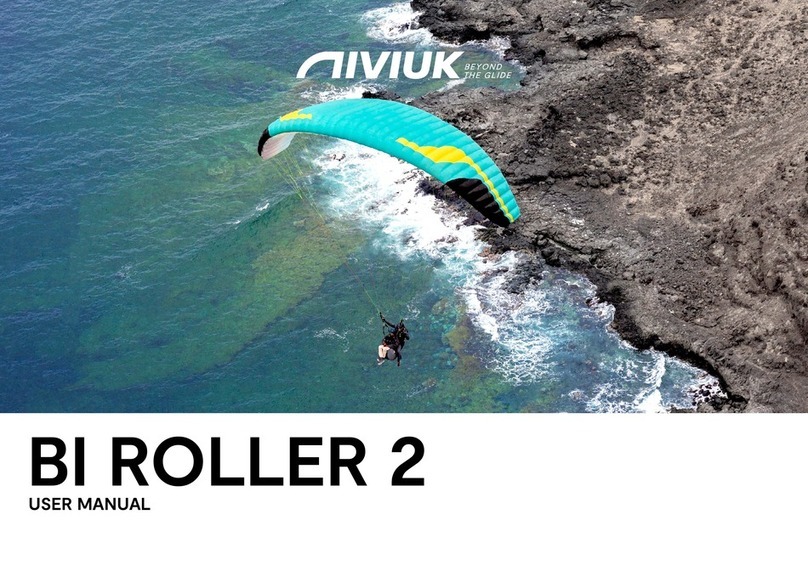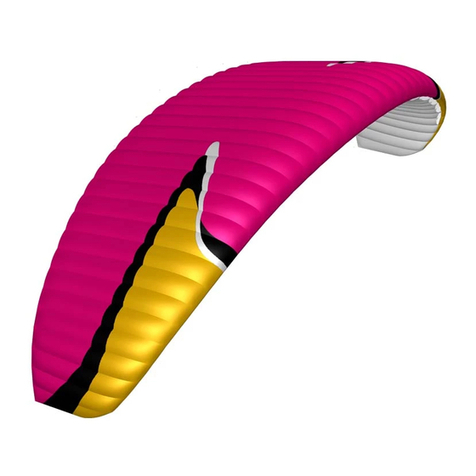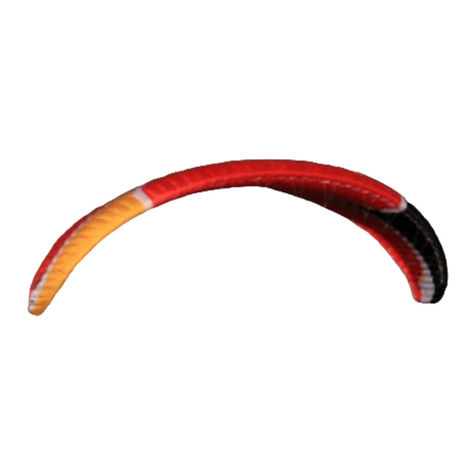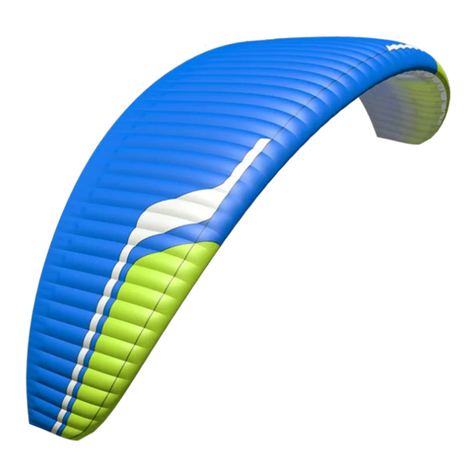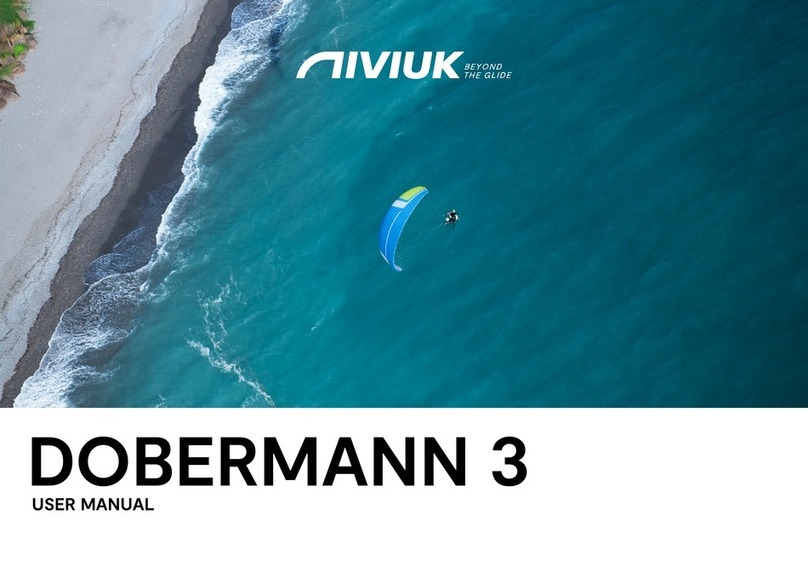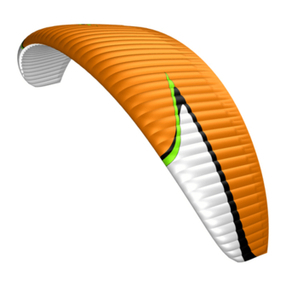4
1. CHARACTERISTICS
1.1 WHO IS IT DESIGNED FOR?
The HOOK 4 P is the lightweight version of our progression wing,
the Hook 4. With up to 1.4 kg less weight, this new model is ideal for
explorers who after making their debut in the world of paragliding decide
to continue progressing with each ight, as well as for more experienced
adventurers who prefer an intermediate, very safe wing.
With the new HOOK 4 P you too can discover and enjoy hike & y or
vol-biv adventures. A wing with an extremely reduced weight and volume
so that from now on you can choose when, where and how to advance.
1.2 CERTIFICATION
The HOOK 4 P’s load test, conducted by the Air-Turquoise testing centre
in Switzerland, exceeded 8 G of force.
1.3 IN-FLIGHT BEHAIVOR
Niviuk developed the HOOK 4 P by adopting very specic guidelines: the
objective was to seek utmost performance while minimising gear weight
and volume for easy transportation, simple and relaxed ying, and above
all, maintain a very high level of wing safety.
With progressive, predictable and efcient handling the HOOK 4 P
effectively reads the air mass, seeking out and coring thermals with
efciency and ease. The HOOK 4 P remains agile, light and predictable in
all conditions of ight and behaves impeccably during turbulence.
The HOOK 4 P was designed with the latest innovations in materials
and technologies, and that aspect provides the glider with a better
performance in all phases of ight.
If you already are a Niviuk pilot, the HOOK 4 P will surprise you. If this is
the rst time you pilot a Niviuk glider, just enjoy it!
1.4 ASSEMBLY, MATERIALS
The HOOK 4 P has all the technological innovations used on other Niviuk
gliders. Furthermore, it is full of small details like the SLE, RAM, DRS,
TNT, IKS and 3 line prole which are destined to enhance the pilot’s
comfort and to improve the performance of the wing.
SLE.- The use of the SLE (Structured Leading Edge) allows reinforcement
of the leading edge, preventing any deformation in turbulence. The
airow is also vastly improved over the entire leading edge of the glider.
RAM.- The RAM Air Intake technology presents an internal positioning
of the air intakes to provide optimal and constant internal pressure while
improving laminar air ow on the undersurface. As a result, a signicant
turbulent air buffering takes place at the leading edge for better
consistency across the speed range, and hence increasing performance
with maximum safety.
DRS.-The trailing edge has been reinforced with small ribs that make this
part atter in order to spread the pressure out evenly. It means better
air-ow and less drag on this important part of the glider. The addition
of these ribs gives exceptional handling (better and more efcient when
turning) and more control and precision.
TNT.- A revolutionary technique using Nitinol, developed to build the
internal structure of the glider, brings a more uniform prole, and hence
reduces the overall wing weight to gain efciency in ight. The Nitinol
provides the highest level of protection against deformation, heat or
breaks. Using this technological advance, the glider is able to maintain its
original features for a longer period of time.
3LT.- Its powerful prole, a detailed internal architectural structure, and
